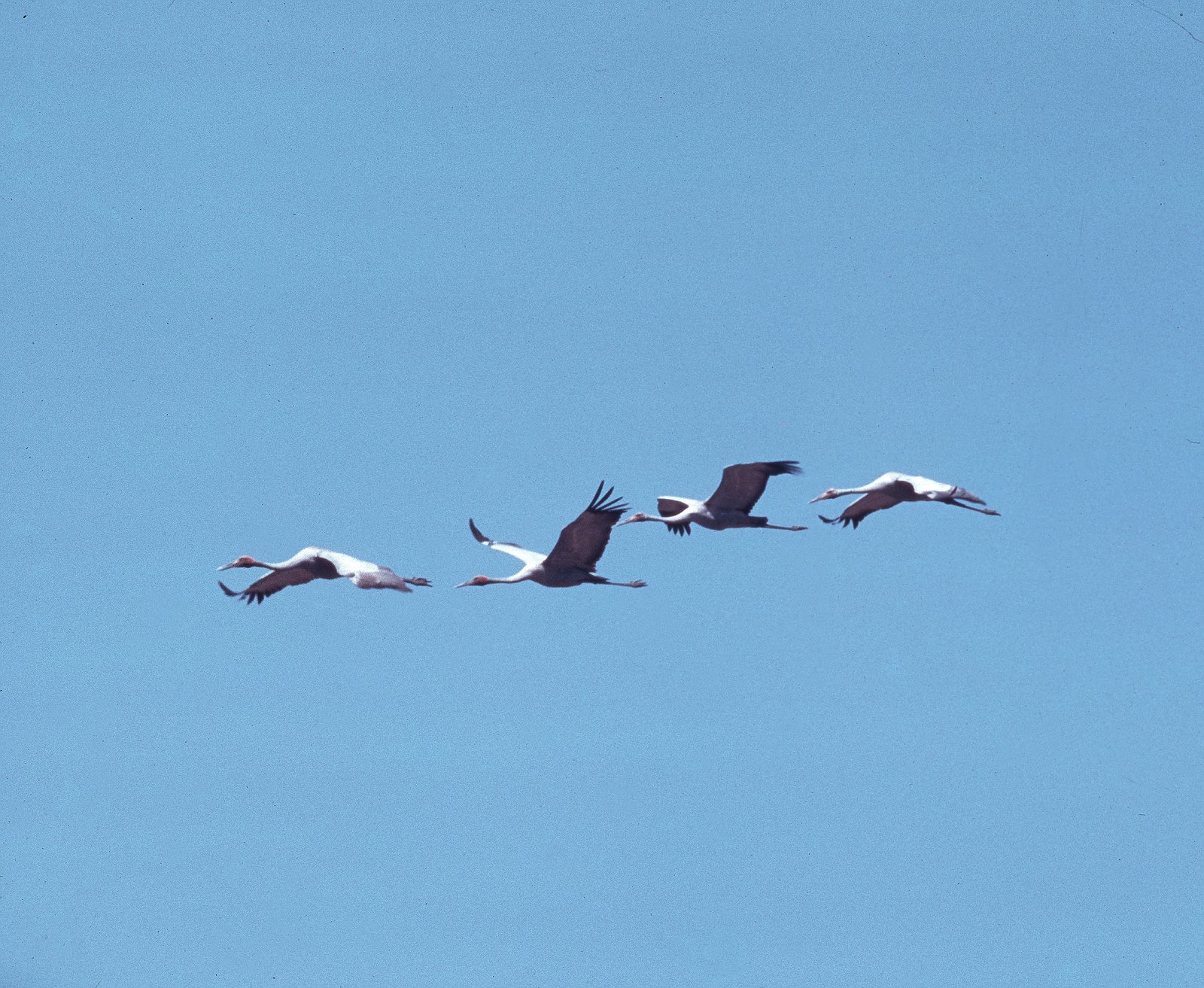Brolga
Sarus Crane

© Unknown
The Brolga is one of Australia's two crane species, and is known for its spectacular dance displays by both sexes during breeding season.
Identification
The Brolga is a large grey crane, with a featherless red head and grey crown. The legs are grey and there is a black dewlap under the chin. Females are shorter than males. The energetic dance performed by the Brolga is a spectacular sight. Displays may be given at any time of the year and by birds of any age.
Habitat
The Brolga inhabits large open wetlands, grassy plains, coastal mudflats and irrigated croplands and, less frequently, mangrove-studded creeks and estuaries. It is less common in arid and semi-arid regions, but will occur close to water.
Distribution
The Brolga is found across tropical northern Australia, southwards through north-east and east central areas, as well as central New South Wales to western Victoria.
Seasonality
Outside the breeding season, Brolgas form large family groups and flocks of up to a hundred birds. These groups may be partially nomadic or may stay in the same area. Some birds also migrate northwards.
Feeding and diet
Brolgas are omnivorous (feeding on both vegetable and animal matter), but primarily feed upon tubers and some crops. Some insects, molluscs, amphibians and even mice are also taken.
Communication
The Brolga's call is a loud trumpeting 'garooo' or 'kaweee-kreee-kurr-kurr-kurr-kurr-kurr-kurr', which is given in flight, at rest or during courtship.
Breeding behaviours
Brolgas probably mate for life, and pair bonds are strengthened during elaborate courtship displays, which involve much dancing, leaping, wing-flapping and loud trumpeting. An isolated territory is established, and is vigorously defended by both partners. The white (blotched with brown and purple) eggs are laid in a single clutch. The nest is a large mound of vegetation on a small island in a shallow waterway or swamp. Both adults incubate the eggs and care for the young birds.
- Breeding season: September to December in the south; February to May in the north
- Clutch size: 2
- Incubation: 32 days
Conservation status
Within New South Wales, Brolga numbers have been much reduced because of widespread drainage of suitable habitat for agriculture, land reclamation and water regulation, but birds are still common and widespread throughout Australia's north.
References
- Pringle, J.D. 1985. The Waterbirds of Australia. Angus and Robertson/National Photographic Index of Australian Wildlife, Sydney.


